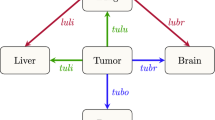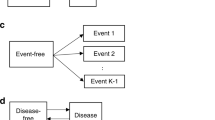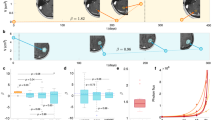Abstract
In order to assess the time at which the distant metastases were initiated, a model has been developed to simulate the natural history of human breast cancer. The metastasis appearance curves were fitted to those observed for tumours of various sizes among the 2648 patients treated at the Institut Gustave Roussy from 1954 to 1972. The model assumes that metastases are initiated when the tumour reaches a threshold volume (distribution of this volume was estimated in a previous article). Two patterns of growth were considered: exponential and Gompertzian. Distributions of tumour and metastases doubling times are fixed according to the literature. A relationship between tumour and metastasis doubling time is estimated. Simulations were used to optimize metastases growth duration as a function of the metastasis doubling time. The ages of the metastases at tumour diagnosis are calculated. With exponential growth, it was necessary to introduce correlations to obtain a satisfactory fit of the metastases appearance curves: between the tumour volume at diagnosis and the doubling time (R1 = -0.3), and between the tumour volume at metastasis initiation and the doubling time (R2 = 0.3). The growth duration of the metastases before their detection was found to equal about 18 metastases doubling times at detection and the mean ratio between the doubling time of a tumour and its metastases equal to 2.2. With Gompertzian growth, it was impossible to adjust satisfactorily the proportions of metastases at diagnosis as a function of the primary tumour volume. However, when we ignore this, the best fit was obtained when the duration of metastases growth before detection was about the same as for exponential growth. With either growth pattern, the model predicts that the proportion of patients with metastases would be reduced by approximately 30% if the primary tumours were treated 12 months earlier. This prediction is consistent with the results of the screening programs for breast cancer.
This is a preview of subscription content, access via your institution
Access options
Subscribe to this journal
Receive 24 print issues and online access
$259.00 per year
only $10.79 per issue
Buy this article
- Purchase on Springer Link
- Instant access to full article PDF
Prices may be subject to local taxes which are calculated during checkout
Similar content being viewed by others
Rights and permissions
About this article
Cite this article
Koscielny, S., Tubiana, M. & Valleron, A. A simulation model of the natural history of human breast cancer. Br J Cancer 52, 515–524 (1985). https://doi.org/10.1038/bjc.1985.222
Issue Date:
DOI: https://doi.org/10.1038/bjc.1985.222
This article is cited by
-
Discontinuation of adjuvant hormone therapy among breast cancer patients not previously attending mammography screening
BMC Medicine (2019)
-
Quantitative mathematical modeling of clinical brain metastasis dynamics in non-small cell lung cancer
Scientific Reports (2019)
-
Modeling the connection between primary and metastatic tumors
Journal of Mathematical Biology (2013)
-
Parallel progression of tumour and metastases
Nature Reviews Cancer (2010)
-
Tumour cell dissemination and growth of metastasis
Nature Reviews Cancer (2010)



